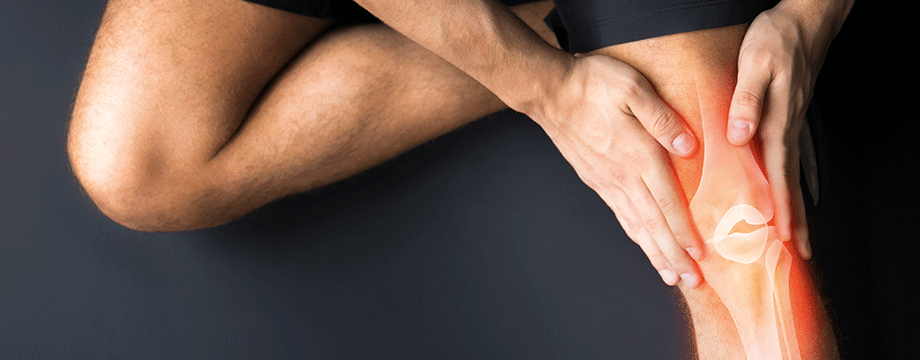9 ways to beat arthritis

Expert tips for tackling this inflammatory condition
Living with arthritis can make even the most everyday situations and tasks hard to cope with. Yet it can be hard for people to grasp the severity of the condition. Worryingly, according to the Arthritis Foundation, it is estimated that by 2040, 78 million adults will have doctor-diagnosed arthritis.
“Arthritis is a generic term for two different conditions,” explains medical herbalist Pamela Spence (pamelaspence.co.uk). “Osteoarthritis is simple wear and tear on any joint that becomes stiff, sore and swollen after use. Rheumatoid arthritis is an autoimmune condition where the body systematically attacks the joints, affecting both sides of the body equally.”
Although there is no cure for most types of arthritis, early prevention and management is crucial. Here, our experts share their top tips on how you can care for your joints and bones, helping to prevent the likelihood of flare-ups.
1. Limit red and processed meats
“For those who have joint problems, it may be best to limit red meat intake (i.e. pork, beef, lamb, etc) to two or three servings a week,” advises nutritionist and fitness trainer Cassandra Barns “as it can contain high levels of a pro-inflammatory omega-6 fat called arachidonic acid. Processed meats of any kind including bacon, sausages, salami and so on are best avoided too. Good quality white meat such as organic chicken and turkey and, of course fish, are good alternatives.”
2. Consider a vitamin D supplement
Research suggests the importance of vitamin D for preventing the onset of inflammatory disease like arthritis. “Vitamin D regulates calcium from food and can help dampen inflammation caused by arthritis and osteoarthritis, especially as we get older,” explains nutritionist Alix Woods.
3. Reduce inflammatory triggers
“Working to reduce inflammatory triggers and promote anti-inflammatory pathways via the diet can be helpful,” says Libby Limon, a nutritionist working with Link Nutrition (linknutrition.com). “Boosting omega-3 and turmeric intake has been shown time and again to help. Glucosamine is another nutrient which is used by the body to help create cartilage and has been shown in studies to be helpful.”
4. Cut back your sugar intake
“Sugar may have a detrimental effect on our health in many ways,” says Cassandra Barns. “When it comes to joint health, high blood sugar levels – often caused by eating too much sugary foods and drinks and ‘white’ carbohydrates such as white bread, pastries and pasta – can increase damage to the joints through a process called glycation, where sugar bonds to proteins. These foods can also cause weight gain, which then puts more strain on your joints. Aim to replace refined grains with whole grain carbohydrates such as brown rice, oats and quinoa.”
5. Flush out the nasties
A lot of joint pain and stiffness is caused by inflammation around the joint tissue, so it is important to include lots of antioxidants in your diet that can help to flush out any nasty toxins from your system. “Eat plenty of cherries, blueberries, blackberries, cranberries, beetroots, as well as carrots, sweet potatoes and tomatoes,” suggests Dr Marilyn Glenville, leading nutritionist and author of The Natural Health Bible for Women (www.marilynglenville.com).
6. Top up your vitamin C levels
“Collagen is a notable part of maintaining healthy joints and strong bones,” explains Alix Woods. “It’s the key structural component in cartilage, which provides protection and shock absorption. Strong tendons and ligaments are essential for keeping joints in place and with age we may want to ensure optimal levels of vitamin C for collagen synthesis. Eat portions of citrus fruit, broccoli, green and red peppers, tomatoes and berry fruits daily.”
7. Manage your weight
“Weight management and low impact exercise play key roles,” says Libby. “Too much weight creates increased stress on the joints, and exercise can help build muscle to stabilise and protect the joint. Maintaining a healthy weight alongside good muscle mass and bone density is the starting point for protecting your joints. For good joint health, it is important to eat a nutritious diet and engage in low impact exercise to build muscle mass and improve bone density.”
8. Enjoy a massage!
“It is thought that expert massage is able to lower production of the pain neurotransmitter and boost the production of serotonin, which can in turn elevate mood and increase the amount of pain-free movement,” says John Holman, director of Massage Training, The Massage Company
(www.massagecompany.co.uk). “Research suggests that regular massage can benefit those suffering from arthritis.
“A study carried out in 2006 by the University of Medicine and Dentistry of New Jersey revealed that just two sessions of Swedish massage each week could alleviate the symptoms of knee osteoarthritis, with sufferers reporting significant improvement in pain, stiffness and movement. In another 2006 study, a group of people with hand or wrist arthritis were given weekly massages, as well as being instructed how to do self-massage at home each day. They in turn reported reduced pain and increased grip strength.”
9. Try some herbal help
“Rheumatoid arthritis is a serious condition usually requiring medication, although some herbs can help,” says medical herbalist Pamela Spence (pamelaspence.co.uk/). “For those with the more common osteoarthritis, herbs can really offer relief. Plants with anti-inflammatory actions like turmeric help to reduce painful inflammation. Turmeric is best taken as a supplement as it is not easily absorbed by the body, so we need a lot of it. Nettle can help to remove excess uric acid from the joints to help pain. Drinking two to three cups of nettle tea a day can be enough to resolve mild symptoms. Herbalists also use white willow bark, which contains the natural form of aspirin and devil’s claw for pain relief. If you have underlying health conditions or take prescription medication it is important that you get expert advice. You can find your local medical herbalist here (www.nimh.org.uk/find-a-herbalist).”
Read previous Your Health articles here...
Read articles from our latest issue here...